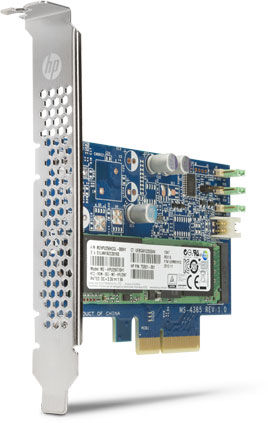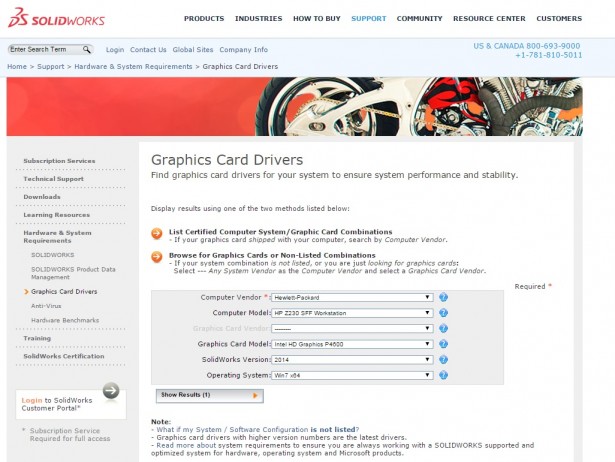Answer These Questions to Maximize SOLIDWORKS 2016 Workstation Performance
SOLIDWORKS 2016 is here! To tap into all the great capabilities offered by this release, you might need to plan for new workstation purchases when you upgrade. So the question becomes: When buying a new workstation for SOLIDWORKS 2016, what is the best configuration to maximize performance and get the most for your money?
Applications
The first thing to consider is which SOLIDWORKS 2016 features you will be using the most. Will you be using PhotoView 360 or SOLIDWORKS Visualize to create high-quality rendered images? Will you be analyzing your designs in SOLIDWORKS Simulation for stress compliance, digital manufacturing, mold/fluid dynamics or other simulations? Will you be tapping into RealView to see your viewport in stunning graphical detail? Will you be running other applications concurrently? The answers to these questions will make a big difference in the hardware you’ll need in your workstation as we’ll see shortly.
Your workstation’s engine is its processor and you only have one chance to get it specified properly. Since the main SOLIDWORKS application is “lightly threaded” – meaning it runs mainly on a single processor core – spend your money on the fastest clock speed processor with the most ample cache you can afford. Using this logic, a quad-core desktop processor like the Intel® Xeon® E5-1650v3 (at 3.8 GHz Max Turbo Frequency with 15 MB cache) or Intel® Xeon® E3-1281v3 (at 4.1 GHz Max Turbo Frequency with 8 MB cache) or Intel® Core™ i7-4790 (at 4.0 GHz Max Turbo frequency with 8 MB cache ) or quad-core mobile processor like the Intel® 4th Generation Core™ i7-4790MX (at 4.0 GHz Max Turbo Frequency with 8 MB cache) are a great choices for many SOLIDWORKS users. Of course in cases where the software is run concurrently with analysis and rendering software, it can make sense to move to more than four cores, but you’ll still want the highest speed and cache size you can afford.
Note: Intel Xeon 12xx/16xx series processors support more cache than the slightly less expensive i7 or i5 processors as well as supporting much more reliable error correcting code (ECC) memory. The additional reliability and speed are worth the extra cost.

RAM
In order for your processor to do its best, it needs enough memory (RAM) to process SOLIDWORKS’s functions as efficiently as possible. Here are a few quick rules of thumb to help you determine how much RAM is ideal:
- • Start with 4GB + 1GB for each CAD/analysis/rendering application
• Add 20x your maximum assembly size for each application
• Round up to next standard size
So a SOLIDWORKS user working with 100 MB assemblies and no rendering could get by with 4 GB + 1 GB + (20 x 0.100 GB) = 7 GB then round up to 8GB. But a SOLIDWORKS user working with 250 MB assemblies running SOLIDWORKS Simulation plus PhotoView 360 would need 4 GB + 1 GB + 1 GB + 1 GB + (3 x 20 x 0.250 GB) = 22 GB then round up to 32.
The first case (at 8 GB) leaves almost no room for the user to utilize more applications or larger models while the second case (at 32 GB) does. Since your workstation will likely be in use for at least three years, you should probably consider 16 GB as a minimum configuration at this time. And no matter how much RAM you purchase, make sure to specify the fastest speed ECC memory your processor can support.
Solid State Disks (SSD’s)
Since SOLIDWORKS works with large models, there is always a good bit of disk activity taking place. And it simply doesn’t make sense to purchase the best processor and RAM you can afford only to have their performance hamstrung by a slow mechanical hard drive. By equipping your workstation with a large enough SSD to contain your operating system, application software and the current models – and adding a conventional hard drive for extra storage – you’ll reduce disk access and get every last bit of performance from your processor, cache and RAM configuration. HP’s new PCIe based Z Turbo Drive G2 achieves well over 2 GB/sec of sequential performance as compared to 500 MB/sec for more common SATA 3-based SSDs. With 512 GB HP Z Turbo Drive G2 at just $559, there’s no reason not to upgrade your workstation to achieve the best possible disk speed.
Graphics
Of course all the inner workings of your workstation won’t matter if you can’t see the results on your monitor, and that’s where the graphics processor unit (GPU) comes in. With graphics options running the gamut from a few hundred to several thousand dollars, with or without application certification, picking the right GPU card can seem confusing. A good way to pick the right GPU is to think about what you’ll be doing as you design. Note your responses to the following questions:
- Will you be designing smaller parts using only simple shaded views and very little 3D visualization?
- Will you be designing larger parts/assemblies using shaded or semi-realistic visualization?
- Will you use real-time rotation, transparent assembly views, or realistic visualization with PhotoView 360 or SOLIDWORKS Visualize?
- Will you be creating photorealistic images using backgrounds, textures and realistic materials with SOLIDWORKS Visualize, at high resolutions?
Of course the more you answer ‘yes’ to these questions, the more graphics power you’ll need and thus a more high-end GPU. The good news is HP makes GPU selection simple by categorizing certified graphics options (see Figure 2) in a way that aligns with questions 1 – 4. The options are (1) Professional 2D, (2) Entry 3D, (3) Mid-range 3D and (4) High-end 3D. Depending on the workstation’s processor, you can select from a variety of SOLIDWORKS-certified graphics ranging from Intel® HD Pro P4600 on-board graphics to external GPU cards that are compatible with the available slots and power supply in the workstation chassis.

Enjoy Years of Performance
Understanding your application software usage patterns allows you to specify processor, RAM, disk and graphics subsystems that give well harmonized performance without overspending. But as you specify your workstations, remember to allow for some future growth of model sizes and possible additional application usage so your workstation will meet your needs in future years as well.
About HP
HP helps you stay ahead of the curve with professional desktop and mobile workstations designed for large and complex datasets, dispersed teams, and tight deadlines. HP Z Workstations, built for Pros with Intel® Inside®, deliver the innovation, high performance, expandability, and extreme reliability you need to deliver your 3D CAD projects in less time. To learn how to configure a HP Z Workstation, visit the HP and SOLIDWORKS page. Start saving now!
© 2015 HP Development Company, L.P. The information contained herein is subject to change without notice. The only warranties for HP products and services are set forth in the express warranty statements accompanying such products and services. Nothing herein should be construed as constituting an additional warranty. HP shall not be liable for technical or editorial errors or emissions contained herein. Ultrabook, Celeron, Celeron Inside, Core Inside, Intel, Intel Logo, Intel Atom, Intel Atom Inside, Intel Core, Intel Inside, Intel Inside Logo, Intel vPro, Itanium, Itanium Inside, Pentium, Pentium Inside, vPro Inside, Xeon, Xeon Phi, and Xeon Inside are trademarks of Intel Corporation in the U.S. and/or other countries. Images courtesy of SOLIDWORKS.






